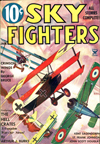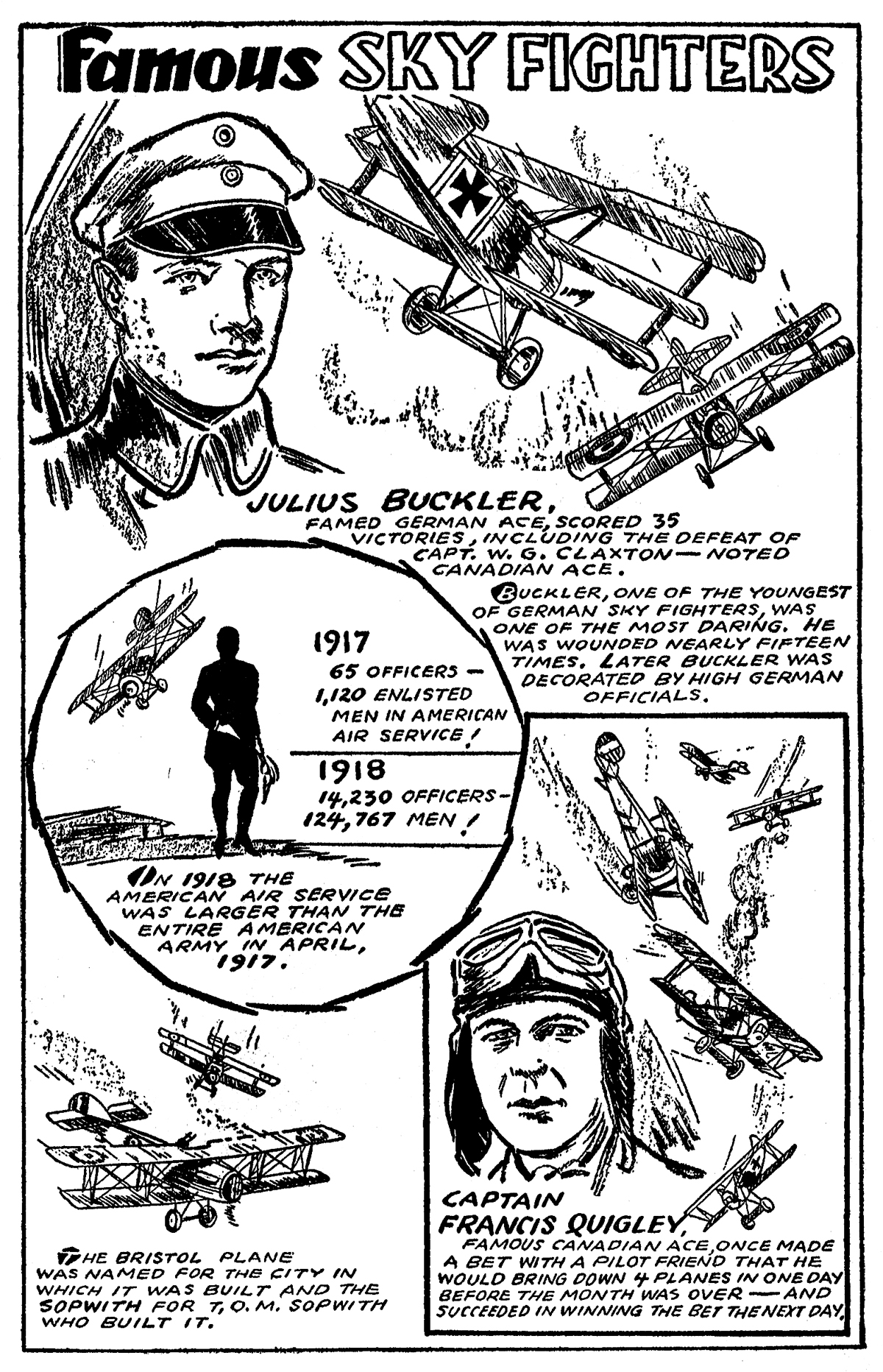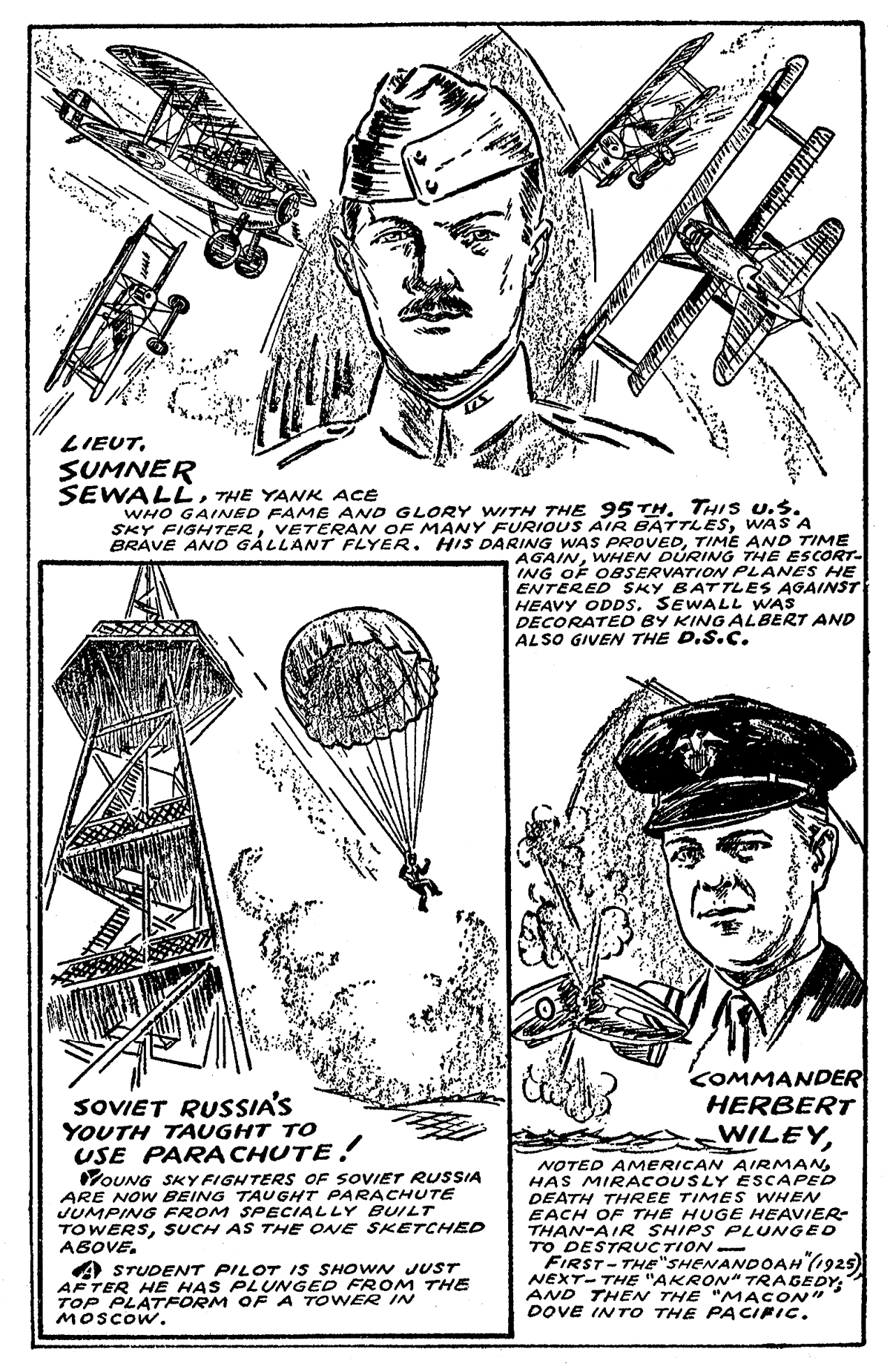Eugene M. Frandzen painted the covers of Sky Fighters from its first issue in 1932 until he moved on from the pulps in 1939. At this point in the run, the covers were about the planes featured on the cover more than the story depicted. On the January 1935 cover, It’s a battle of the experimental Morane-Saulnier up against the mighty Fokker Tri-Plane!
The Ships on the Cover
A FLYER who goes out  of his way to tackle three enemy ships and down the bunch in one fight is called a “Three in One.” Meaning, of course, three in one fight. But that said flyer, before barging into a seemingly hopeless scrap, must have more than mere courage. My guess would be: courage, exceptional flying ability and nerves of steel.
of his way to tackle three enemy ships and down the bunch in one fight is called a “Three in One.” Meaning, of course, three in one fight. But that said flyer, before barging into a seemingly hopeless scrap, must have more than mere courage. My guess would be: courage, exceptional flying ability and nerves of steel.
Andrew McKeever and Francis Quigley and James McCudden were “three in one” Aces. McKeever, a Canadian, made three kills in one fight. The odds against him were nine to one and just to make it more interesting, the fight occurred far behind the German lines. The Cannuck charged into the mass of attacking Germans and tore their morale to pieces by blasting three of them out of the skies. The remaining six Hun pilots were so dazed by McKeever’s audacity that they allowed him to slip away from them and he returned home without a scratch.
Tangling Them Into Knots
McCudden, whose score was high at the time, hopped a squadron of German ships. He tangled them into knots with his brilliant flying and marksmanship. Four of the German ships crashed to earth under his guns. Dozens of German slugs tore through McCudden’s plane but he was unharmed and landed safely.
That gives you a look-see at a couple of the famous aces of the war whose official records are now history. Now take a look at the cover to see a Frenchman qualifying for the “Three in One” club.

The Fokker triplane was a ship which stood out boldly on the German roster of famous ships. Some of the Fokker tri-planes were slow. Fokker built these tripes originally around the 100 h.p. Oberursel rotary motors and had to be content with the speed this engine delivered. Later when more powerful motors were installed his tripes climbed well into the first division for speed. What they lacked in miles per hour they made up in maneuverability. They could “turn on a dime.”

This super-maneuverability was due to the shortness of the fuselage bringing the tail close up to the wings and also to the short span of the wings. The experimental Morane-Saulnier is the exact opposite to the triplane design and cannot get into a change of direction as quickly as the tripe. It is built more for slashing attack. Having a single wing against the three of the German ship makes the scrap all the more interesting.
Under the Guns!
One of the quick darting Fokkers has already fallen under the guns of the Morane pilot. Another is taking its death potion from the blazing guns of the French plane as it zooms up under its nose. The third Fokker pilot is so rattled that he is firing more at his colleague in the foremost Fokker then at the Morane-Saulnier. It’s finis for him as soon as the speedy Morane-Saulnier can swing it’s guns in his direction.
Flyers didn’t go out every day or two and engage superior numbers of enemy ships just to show how the trick was done. It was rather a once-in-a-lifetime stunt for a very few of the best. To zoom into sky conflict with a single enemy plane takes courage. But to tangle with a gang of your foes, down three or more of them and come through the show with colors flying, takes courage PLUS.
Plus what? I’ve already made my guess. What’s yours?

Sky Fighters, January 1935 by Eugene M. Frandzen
(The Ships on The Cover Page)
Next time, Mr. Frandzen features the Bristol Fighter F2B and the Siemens Halske D4!












